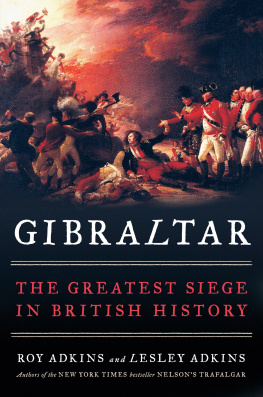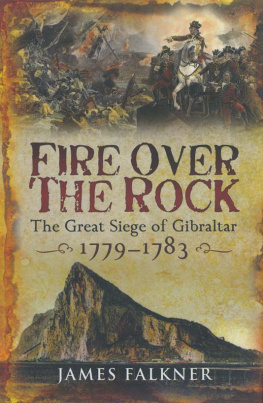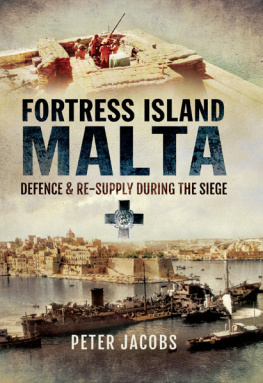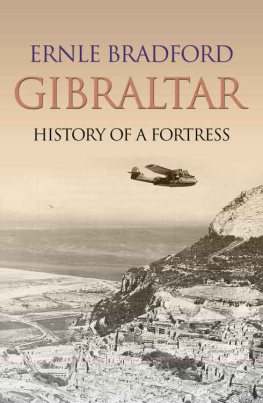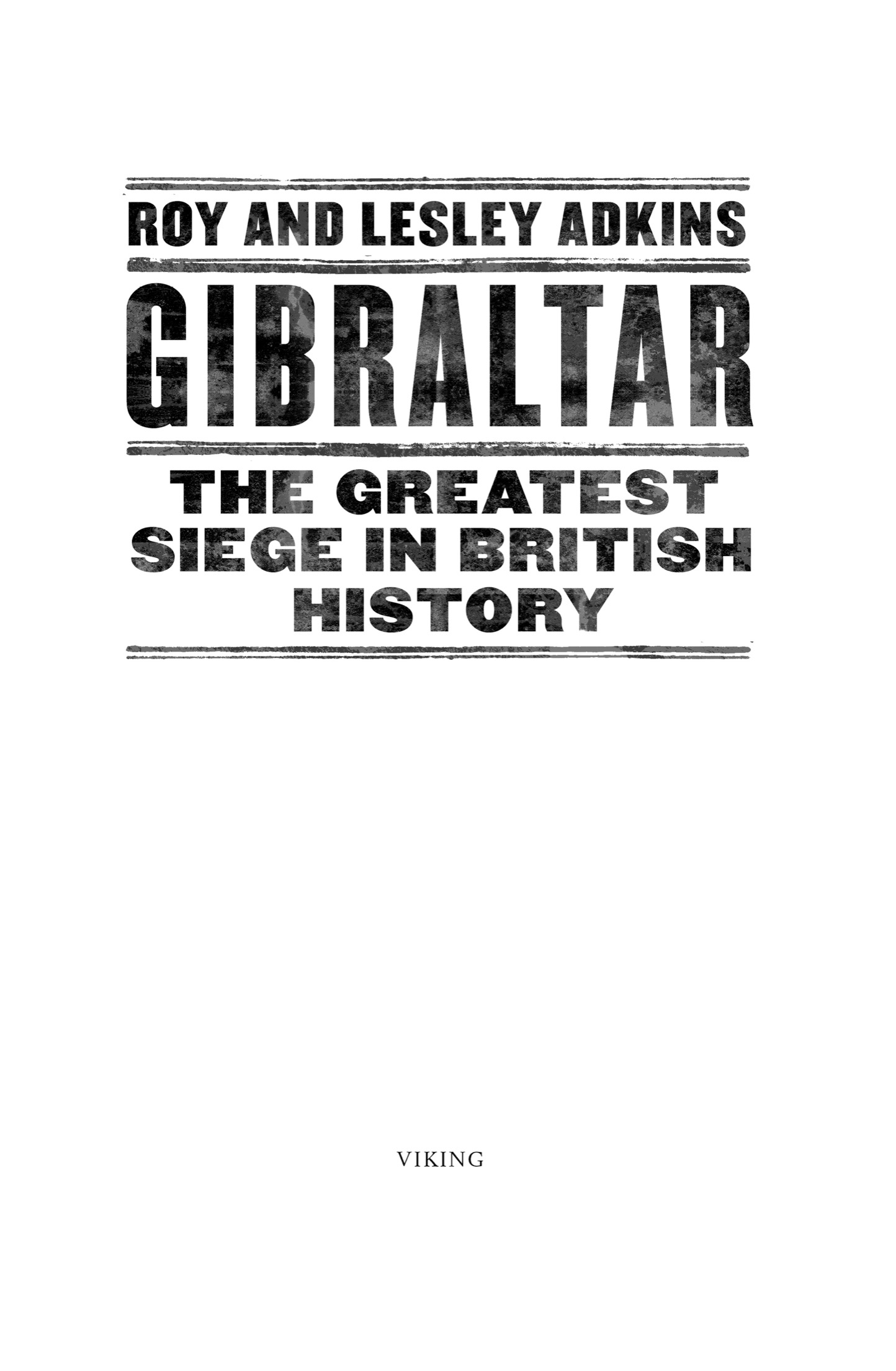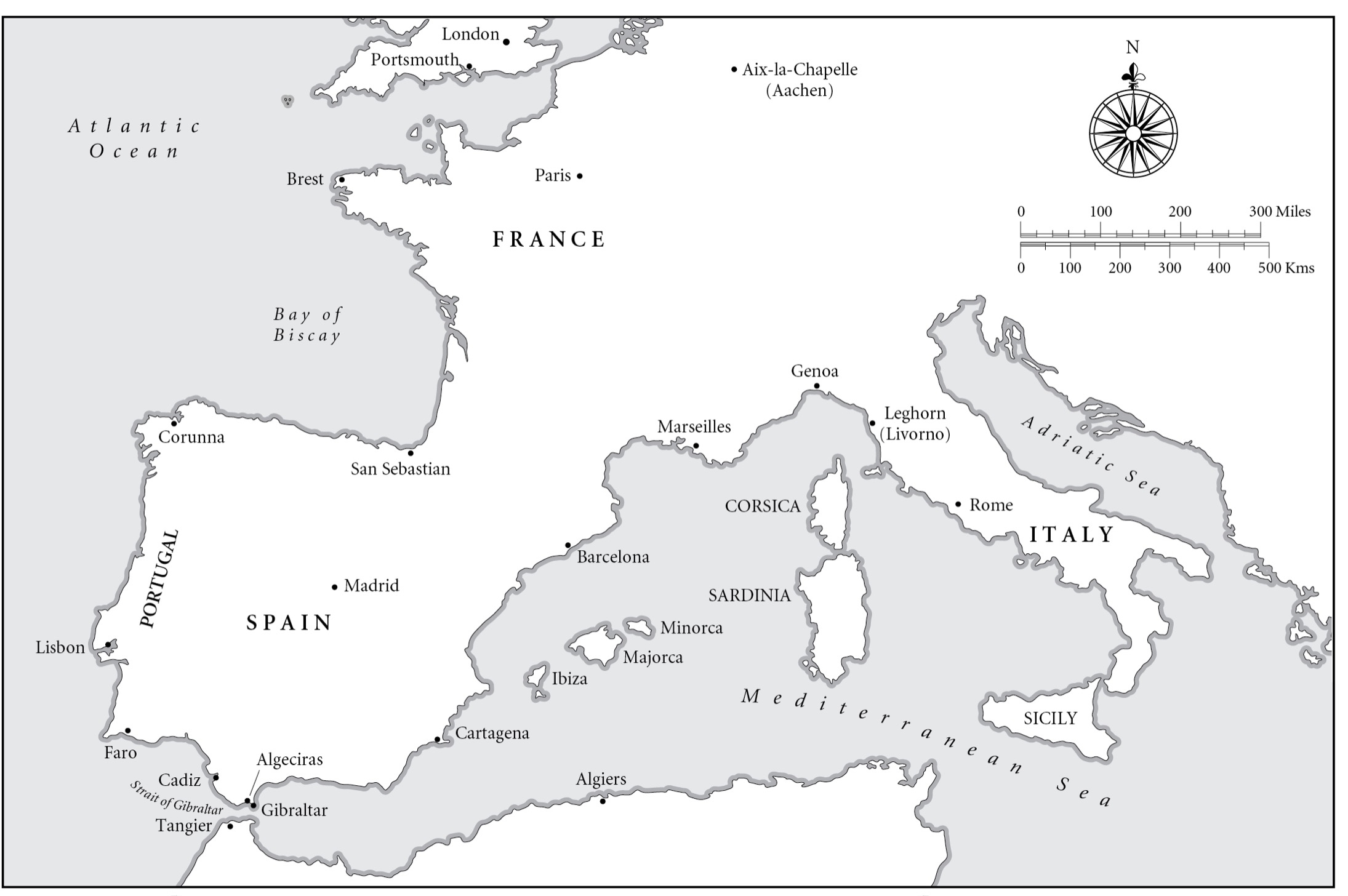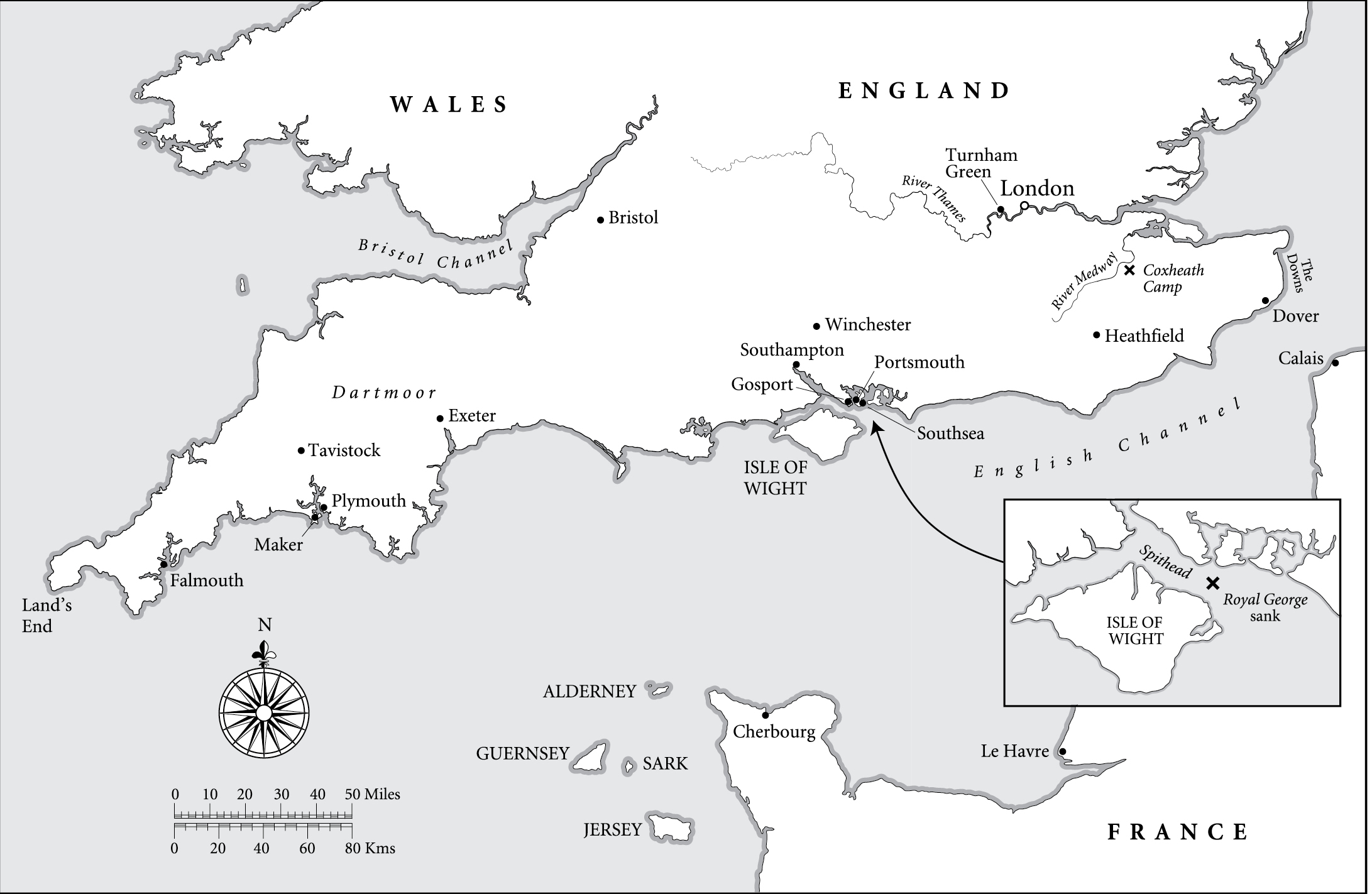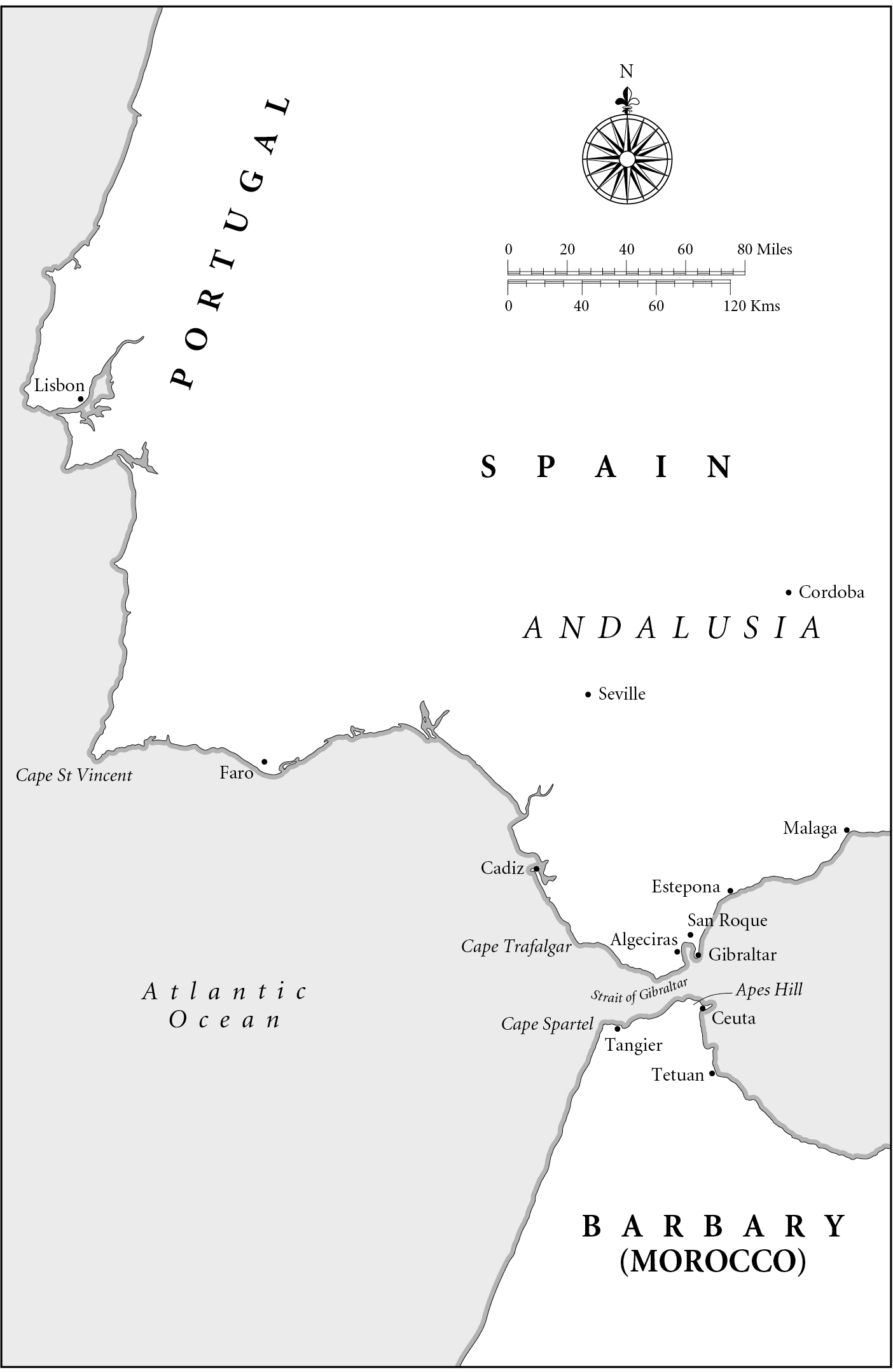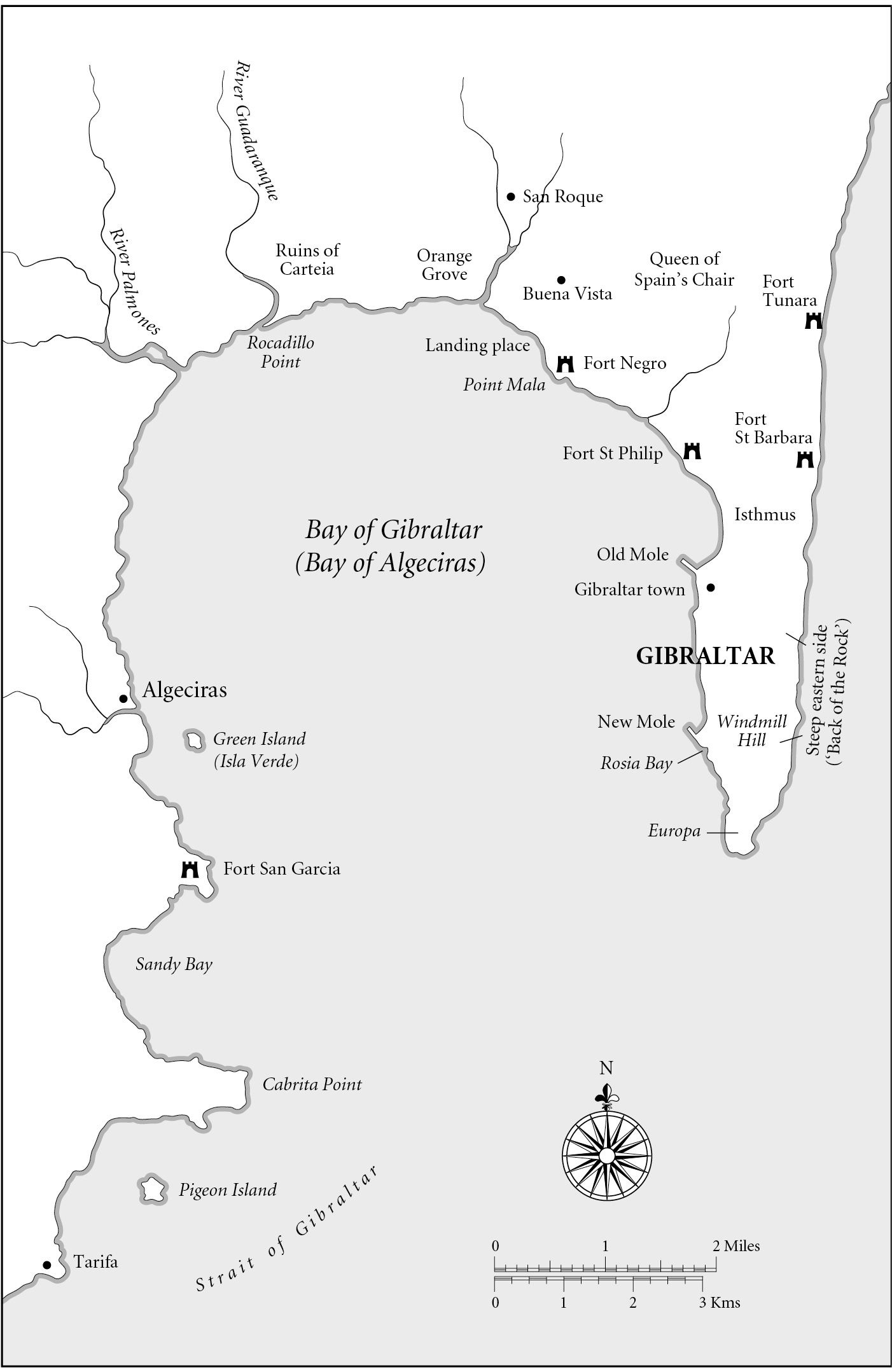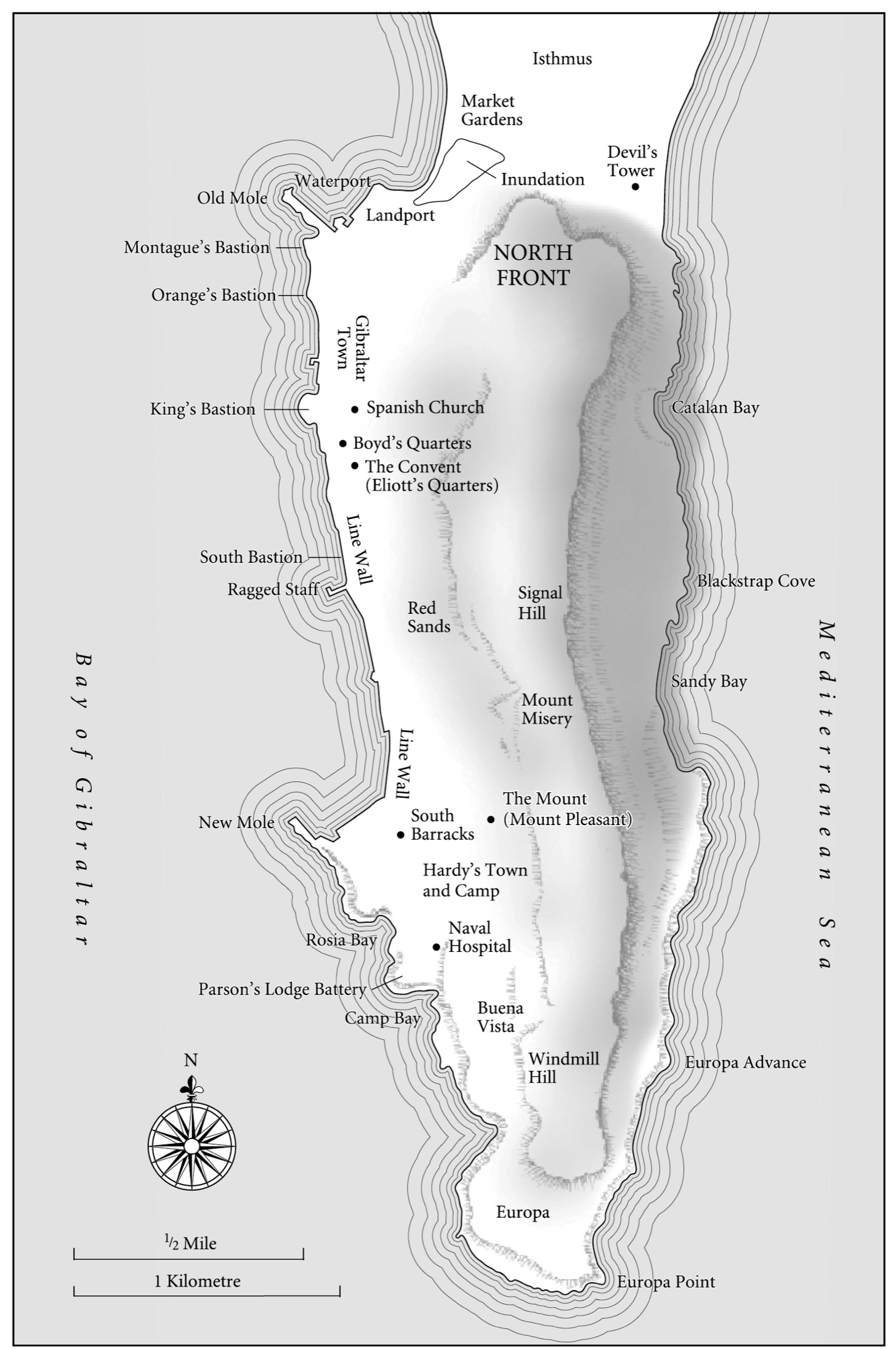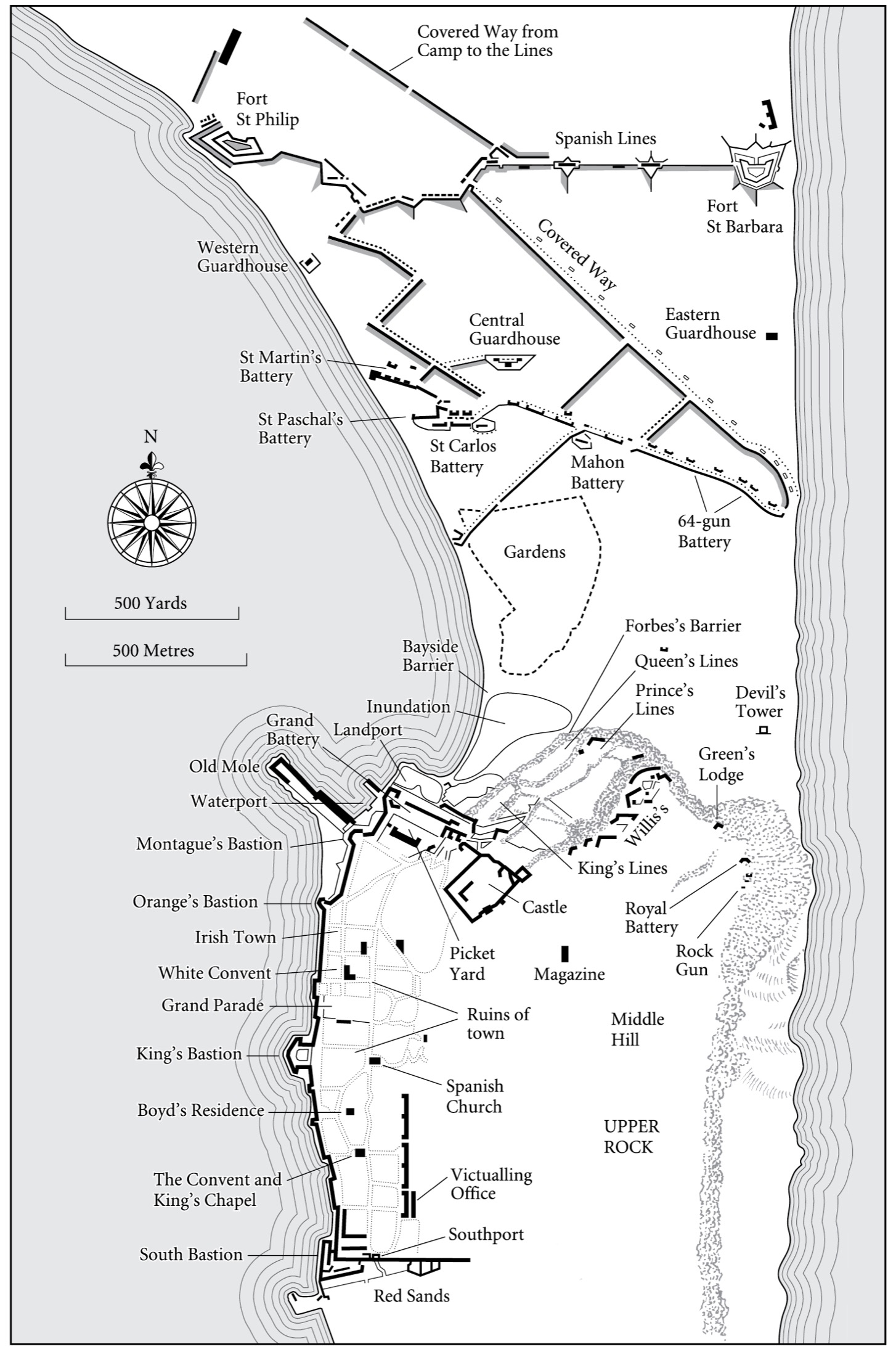Main locations within Gibraltar town (in ruins), the northern part of the Rock, the Spanish Lines and the advance works across the isthmus by September 1782. Williss comprised several batteries, including Princess Amelias, Princess Annes and Princess Carolines
PROLOGUE
DISASTER
After three years of relentless siege, everyone on Gibraltar was starving, war-weary and desperate for the relief convoy to arrive, not realising that it was yet to set sail on the 1500-mile journey. The convoy was still at Spithead, between the Isle of Wight and Portsmouth, though with the newspapers in England full of stories about an imminent assault on the Rock, fears were growing that it was already too late to save Gibraltar. Even so, urgent preparations were being carried out on board a multitude of vessels, including the Royal Navys greatest wooden warship, HMS Royal George a formidable three-decker with more than 100 cannons and a crew of around 850 seamen, officers and marines.
On board this particular warship, the final consignment of stores needed to be loaded, as well as some last-minute repairs done, but being a fine morning, the vessel would soon be ready to sail. In nearby Southsea, a woman glanced out towards the Royal George, taking in the idyllic scene, before starting on a letter to a distant relative. The day is calm and pleasant, she wrote, and as I sit at the open window, the great vessel in the offing, betwixt me and the Fair Island [Isle of Wight] seems to sway not a hand-breadth, nor to flutter a single pennant. Her shock as she looked out to sea once more was betrayed by the shaky handwriting:
A dreadful thing has happened. When I had written that beginning of my letter, Dorothy, I looked again southward; the sea was waveless as before, and the Fair Island sparkled in the sun, but betwixt us and it I saw no trace of the great three-decker. I thought my brain had gone wrong, and rang the bell for Agnes; but when she too could see nothing of her, a terrible apprehension took hold of me; and when the alarm-guns from the fort [Southsea Castle] began to thunder, I knew the vessel had gone down. I hear near a thousand men were aboard of her.
In the time taken to write a few sentences with a quill pen, the Royal George had sunk so rapidly that hundreds of people were trapped and drowned. Men in nearby ships were equally stunned. One eyewitness related that they all rushed on deck: What an altered scene in a few short moments! ... She was not in the spot she so lately occupied no vestige of her was to be seen; but as soon as the commotion of the water was stilled (for some minutes it was very great), all the boats ... put off for the spot, which seemed as though a hive of bees had been cast on the waves, so thick with boats and human beings struggling for life ... Long, long, will the 29th of August, 1782, be remembered!
One of the few lucky survivors was the seaman James Ingram, who had been on the upper deck heaving massive wooden barrels of rum on to the deck as they were hauled up in a sling. The last lighter [the Lark sloop], with rum on board had come alongside, he later wrote,
this vessel was a sloop of about fifty tons, and belonged to three brothers, who used her to carry things on board the men-of-war. She was lashed to the larboard [port] side of the Royal George, and we were piped to clear the lighter and get the rum out of her, and stow it in the hold of the Royal George. I was in the waist of our ship [middle part of the upper deck], on the larboard side, bearing the rum-casks [barrels] over, as some men of the Royal George were aboard the sloop to sling them.
Although the warship had been tilted to one side to carry out a repair just below the waterline, the angle was so slight that those on board took little notice, and from nearby ships everything looked normal. With barely a breath of wind and a flat calm on the sea, conditions for repairs and loading supplies were ideal, but suddenly Ingram heard an urgent order to bring the ship upright: I ran down to my station, and, by the time I had got there, the men were tumbling down the hatchways one over another to get to their stations as quick as possible to right [the] ship. My station was at the third gun from the head of the ship on the starboard side of the lower gun-deck. Before anything could be done, the warship began to tip over sideways, and Ingram managed to escape by following his friend Ned Carrell through a gunport: I immediately got out at the same port-hole, which was the third from the head of the ship on the starboard side of the lower gun-deck, and when I had done so, I saw the port-hole as full of heads as it could cram, all trying to get out. Even as he scrambled to safety, the ship was falling sideways, so that the gunports were now facing upwards, towards the sky:

